Standing on Bolonia Beach, I watched the waves roll in and the wide sand dunes shift in the wind.
Just a short walk from the shore, I stumbled onto the Roman ruins of Baelo Claudia—a spot where history and nature collide in the most unexpected way.
Bolonia Beach and the Baelo Claudia ruins mix wild Andalusian beauty with remarkably preserved Roman history, all in one unforgettable place.
The ancient city ruins, once famous for trading and making garum, sit right up against the fresh blue waters of the Atlantic.
I wandered these stone streets, feeling like I’d slipped back in time, all while the waves crashed nearby and the salty breeze brushed past.
No other place I’ve found lets you experience classic history and wild coastline together like this.
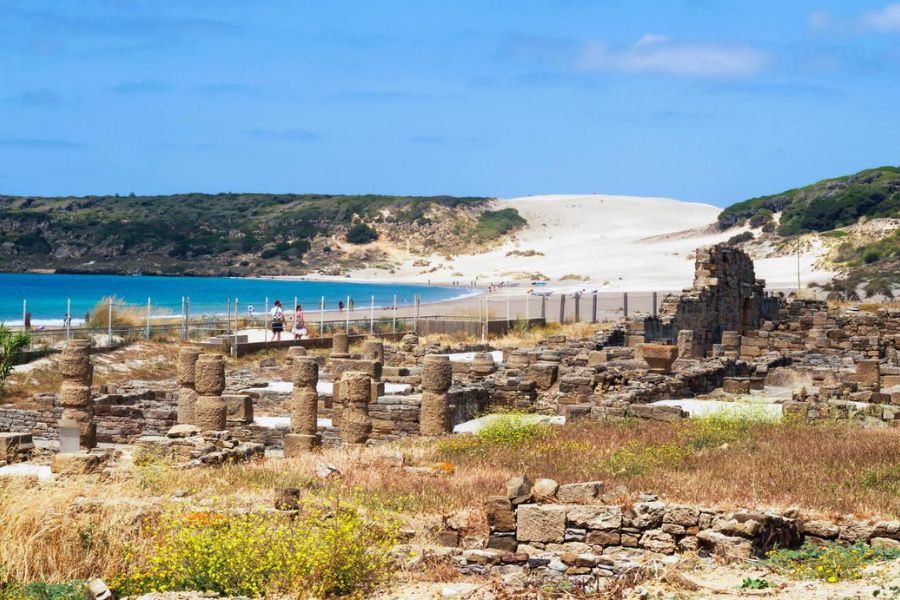
If you want a day that blends sandy adventures with a walk through the past, this place really delivers.
It’s not just a dusty lesson from a history book—Baelo Claudia and Bolonia Beach pulse with stories, scenery, and that special magic you only get in southern Spain.
Discovering Bolonia Beach: A Dune-Backed Andalusian Paradise
Bolonia Beach honestly surprised me.
The dunes are wild, the surf is bright blue, and the whole place feels calm, like it’s a world apart from the crowded resorts elsewhere.
Wild cows wander the shore, and history pops up around every corner.
It’s definitely a unique spot, and there’s something refreshingly real about it.
Panoramic Views and Wild Landscape
The first thing that caught my eye on Bolonia Beach was the massive golden sand dune.
It rises along the edge of the beach, towering high enough to be a local landmark.
Climbing it took some effort, but honestly, the view from the top is worth every sweaty step—jaw-dropping, really, with the bay stretching out to the horizon.
The beach is wide, with soft, fine sand that goes on for more than three kilometers.
Crystal-clear water rolls in on gentle waves, and sometimes the wind brings out flocks of kitesurfers.
I spotted herds of cows sunbathing or just wandering along the water’s edge—definitely not something you see on most Spanish coasts.

Pine forests and low green hills wrap around the area, adding a splash of color and making the landscape feel even more alive.
If you love wild nature and big open spaces, Bolonia is tough to beat.
There’s a freedom here that’s hard to find on Spain’s busier beaches.
The Local Vibe and Spanish Society
Bolonia Beach doesn’t feel like a tourist trap.
Most people I met were Spanish families, groups from Cádiz, and a few relaxed surfers or hikers.
Kids kicked soccer balls in the sand, friends shared picnic lunches, and the laughter from big family gatherings drifted across the shore.
Small chiringuitos—those simple beach bars—serve up fresh local seafood, cold drinks, and the good old Spanish tortilla.
The menu usually looks something like this:
| Typical Dishes | Description | Price Range (€) |
|---|---|---|
| Grilled Sardines | Fresh, cooked over open flame | 8-12 |
| Tortilla Española | Potato omelet | 6-10 |
| Boquerones Fritos | Fried anchovies | 9-13 |
This slower pace lets you soak up how locals enjoy the weather and the simple pleasures.
I heard plenty of Andalusian accents and noticed those daily Spanish rituals—long, lazy lunches, siestas, and lots of time just hanging out in nature.
Getting to Bolonia from Cádiz
Getting to Bolonia Beach from Cádiz isn’t too tricky, but you’ll want to plan a bit.
I drove the 95 kilometers in about an hour and a half, following the A-48 and N-340 until the Bolonia turnoff.
The last few kilometers run along a narrow rural road, sometimes with cattle crossing and fields rolling by.
Public transport here is pretty limited.
No trains come this way, and only a handful of buses run from towns like Tarifa or Algeciras, especially outside summer.
Honestly, renting a car is the easiest way to get here.
Parking is free in the off-season, but in the hottest months, the lots fill up fast.
I recommend arriving early to dodge crowds and snag a spot close to the water.
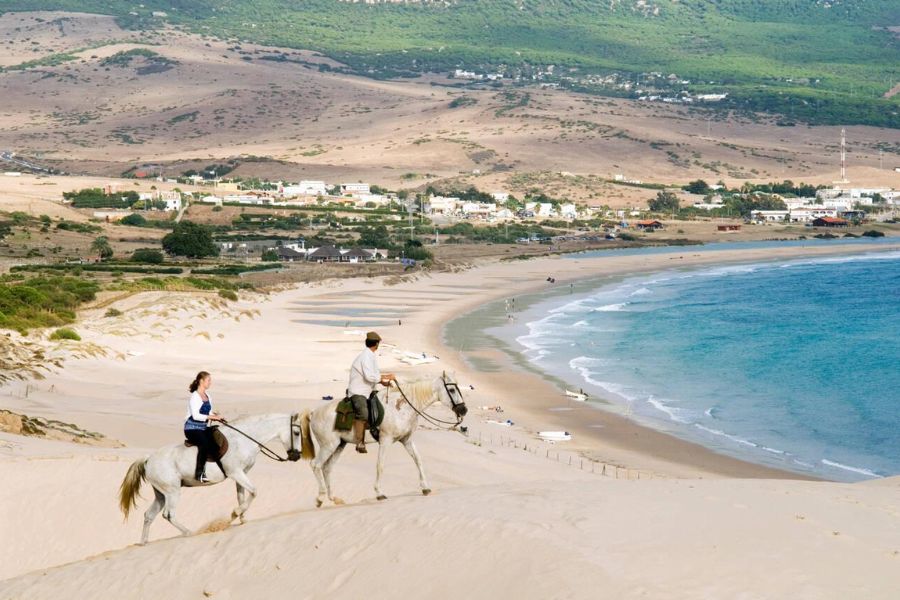
Bring water and sunscreen—shops are basic and supplies can run out by afternoon.
Part of Bolonia’s charm is how remote it feels, but that also means you need to be a little prepared.
Unveiling Baelo Claudia Ruins: A Step Into Roman History
Walking through Baelo Claudia, I got swept into a world where Roman life thrived right on the Andalusian coast.
The ruins really capture the heart of Roman Hispania, linking old legends and ancient trade with sandy shores and wild scenery.
Origins and Significance of Baelo Claudia
Baelo Claudia sits right at the edge of Bolonia Beach, just 22 kilometers from Tarifa.
Romans founded this city in the 2nd century BCE, and it hit its peak during Emperor Claudius’s rule in the 1st century CE.
Its strategic spot by the Straits of Gibraltar turned the city into a hub for trade between Europe and North Africa.
Baelo Claudia became famous for making garum, a fish sauce that Romans craved across the empire.
Salted fish also anchored the city’s prosperity—the sea was their lifeline.
Today, the ruins are impressively preserved.
You can walk through the forum, basilica, temples, and theater, and get a real sense of how Romans built, ruled, and worshipped in Hispania.
It’s easy to picture daily life here, with the Mediterranean shimmering just beyond the old stones.
Ties to Gadir, Tartessos, and Prehistory
Long before the Romans, this part of Spain drew traders and settlers from all over the Mediterranean.
Baelo Claudia sits not far from Gadir (modern Cádiz), one of Europe’s oldest cities, founded by Phoenician sailors over 3,000 years ago.
The mysterious Tartessos civilization left its mark on this coastline, hinting at pre-Roman trade and mining.
Archaeologists keep finding signs of ancient dwellings and pottery, proof of a mix of Iberian, Phoenician, and even older cultures.
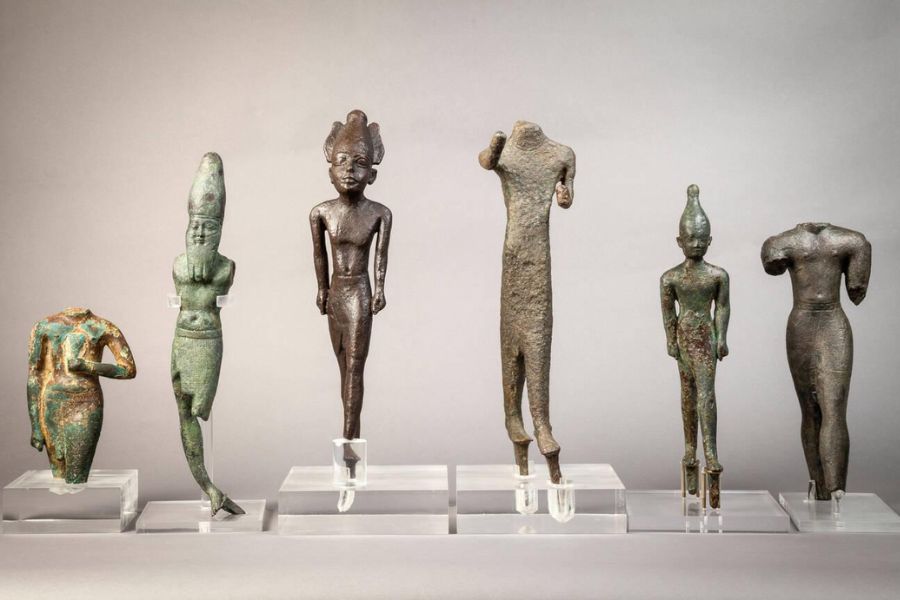
It’s not hard to imagine caravans and ships unloading goods here—bronze, silver, and exotic wares that shaped Spain’s early history.
Baelo Claudia’s spot connects all these ancient stories, and every stone feels like it’s layered with human history.
Exploring the Ancient Roman City
I wandered through the ruins, following clear paths to the main structures.
At the edge of the forum, I stood where magistrates once held court and citizens debated.
The theater, still partly standing, would have hosted plays and gatherings under the open sky.
Parts of the basilica still rise above the ground, with slabs of stone and carved capitals catching the golden Andalusian light.
The baths’ walls and floor plans show how the Romans pampered themselves—fired tiles and pools hint at their everyday comforts.
You’ll find helpful signs, a small museum, and sometimes guided tours to explain the ruins.
I’d bring water, a hat, and solid shoes—there’s barely any shade, and the site stretches right down to the dunes.
Andalusian Layers: From Al-Andalus to the Visigoths
Wandering around Bolonia, I kept getting caught up in the layers of history scattered along the coast.
Empires and cultures have shaped these views, leaving marks not just in ruins but in the rhythms and faces of Andalusia today.
Visigothic and Moorish Influences
Before the Moors arrived, the Visigothic period played a huge role in Spain—including the Cádiz area.
The Visigoths ruled from the 5th to early 8th centuries, leaving behind churches, artifacts, and bits of law that still echo in Spanish traditions.
When I pause by ancient stones around Baelo Claudia or in the hills above Bolonia, I can almost see Visigothic settlers here after Rome’s fall.
Few buildings remain on the coast, but their presence set the stage for big changes—a short Visigothic rule before the dramatic arrival of the Moors from North Africa.
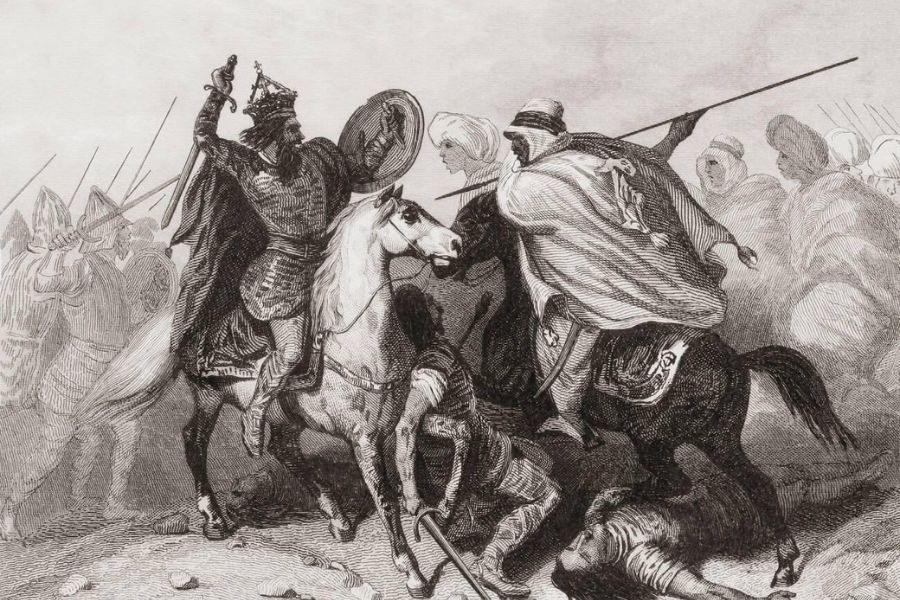
The Moors, or Muslims, built on what they found.
Their arrival in 711 AD changed Andalusia, mixing languages, religions, and art.
The landscape shifted too—arched windows, garden layouts, and small details on old ruins still hint at their influence.
Cultural Echoes of al-Andalus
During al-Andalus, Muslim-ruled Iberia, this region flourished as a center of learning, science, and trade.
Cities like Córdoba and Granada became jewels of the world.
Even in a small beach town like Bolonia, I notice names, foods, and architectural touches that whisper back to that golden age.
Walking through old towns, I spot Arabic patterns on tiles and taste hints of Moorish flavors—almonds, honey, or spiced lamb pop up in local dishes.
Some farmers in Cádiz province still use water systems inspired by Moorish engineers.
Even the word “al-Andalus” lives on in Andalucía, a reminder of those centuries of cultural mixing.
Local festivals blend Christian and Moorish symbols, and plenty of people trace their roots to both periods.
This shared heritage makes exploring the coast feel like flipping through a living history book.
Linking Granada and the Coast
Granada is home to the world-famous Alhambra, a masterpiece of Islamic art built at the tail end of al-Andalus.
Even from Bolonia’s beaches, Granada feels connected by more than just winding roads.
Over the centuries, trade and travel tied the coast to the inland cities.
When I travel from Cádiz or Bolonia to Granada, I see olive groves and whitewashed villages that remind me of stories from Moorish times.
Merchants, scholars, and explorers once moved along these routes, carrying salt, fish, and silk between the sea and Granada’s palaces.
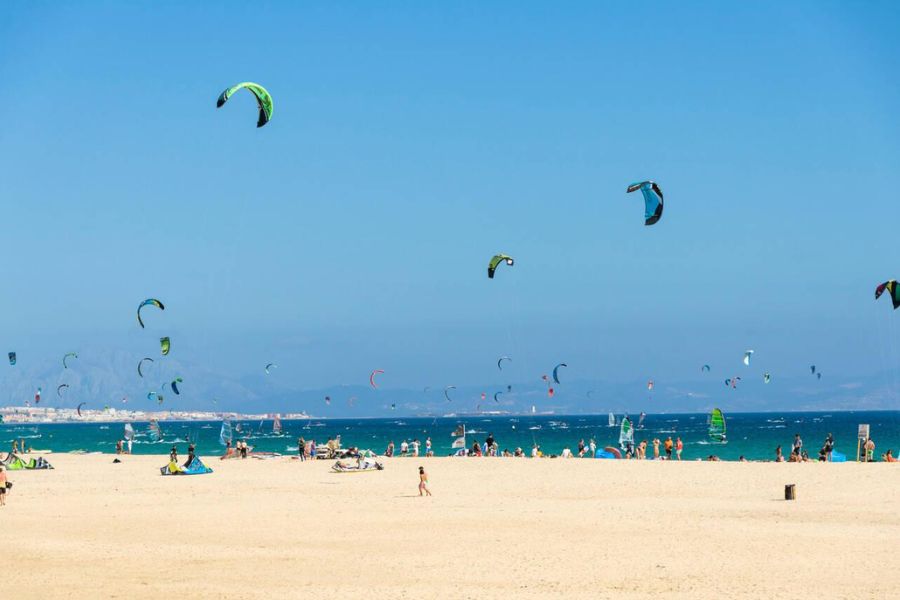
These days, jumping from Bolonia’s wild dunes to the quiet halls of the Alhambra is easy.
That journey follows old routes, and you can still feel how al-Andalus shapes daily life across southern Spain.
Sun, Sand, and Heritage: What to Do on Bolonia Beach
Bolonia Beach balances golden sands with fascinating sights and flavors.
Climb huge dunes, taste fresh seafood, and get an up-close look at local life, ancient history, and the raw beauty of southern Iberia.
Hiking the Bolonia Dunes
Climbing the shifting dune at Bolonia is a must-do.
The dune rises dramatically from the shore, shaped by strong Atlantic winds.
On my visit, I hiked up barefoot, feeling the cool, fine grains slipping under every step.
At the top, panoramic views of the Atlantic Ocean and the rolling Andalusian hills make the climb worth it.
The dune is big enough for a playful roll down the side—kids and adults both go for it.
Every time the weather changes, I notice the dune’s shape shifts a bit, so each hike feels a little different.
If you love photography, sunrise or sunset gives you the best light.
The walk up feels wild and untouched, the kind of thing that makes you feel small but totally alive.
Tips for Hiking the Dune:
- Wear sunscreen and bring water.
- The sand gets hot by midday; early mornings or late afternoons are best.
- Stick to marked paths to protect local plants.
Swimming and Beach Activities
Bolonia Beach stretches for nearly four kilometers. The water feels clear and cool, and the waves usually stay gentle, which makes it perfect for a relaxing swim.
I loved floating on my back, letting the salty breeze drift over me, with hills on one side and endless blue stretching out on the other.
The clean sand feels soft underfoot and works great for beach games. Locals and tourists often gather for volleyball or paddleball in the marked-off spots.
Kids wade in the shallows, build sandcastles, or hunt for little shells. The open space means everyone can spread out, which I really appreciated, especially on those crowded weekends.

For wind lovers, kitesurfing takes center stage thanks to Tarifa’s famous breezes. A few rental places sit right on the beach, offering boards and short lessons.
Don’t Forget:
- Lifeguards watch over swimmers during peak summer months.
- Nobody allows loud water sports near the ruins zone.\
- Bring cash for lockers or gear rentals.
Local Cuisine and Beachside Chiringuitos
Honestly, few things hit the spot after a swim like fresh fish and a cold drink from a chiringuito, or beach bar. The ones here spill out onto open-air terraces, so you can eat with your toes in the sand.
Grilled sardines and tuna steaks jump out on most menus, often served with crunchy salads or Spanish omelets.
Some chiringuitos pour local wine or tinto de verano, that light red wine cocktail you’ll see everywhere. Sitting down with a plate of fried fish, I watched fishermen unload their catch—a reminder of how much the Spanish economy, especially in Andalusia, still leans on the sea.
Many of these places are family-run. They get busiest at lunch, and some close during the off-season, so I always check opening times first.
Popular Menu Items:
- Grilled sardines (“espetos”)
- Tortilla española (potato omelet)
- Fresh tomato salad with local olive oil
- Fried calamari
Eating at a chiringuito gave me the perfect taste of coastal Spain—simple, delicious, and rooted in the rhythms of Iberian seaside life.
Capturing the Spirit: Art, Inspiration, and Modern Connections
Standing on Bolonia Beach, I felt the weight of history mixing with the wild beauty of the dunes. The blend of ancient ruins and creative energy in this corner of Spain shaped my visit in unexpected ways.
New ideas for appreciating both the past and the present kept popping up as I wandered.
Velázquez and Spanish Art
As I walked between the columns of Baelo Claudia, I couldn’t stop thinking about the long tradition of Spanish art. Velázquez, one of Spain’s greatest painters, drew inspiration from Roman themes and timeless landscapes.
His attention to detail and the way he played with light remind me of the glowing sand and quiet stone at Bolonia.
Artists still come to Bolonia looking for their own spark. Some sketch the forum or try to capture the bright blues where the Atlantic meets the ruins.
If you care about Spanish art, it’s worth bringing a sketchbook or camera. It’s easy to see why famous artists and casual travelers both get drawn to these views.

Here, art, history, and nature really connect. These ruins aren’t just old stones—they’re part of a living tradition that inspired Velázquez and still sparks new ideas today.
Photographic Moments Along Bolonia
I kept reaching for my camera at every turn—seriously, the scenery almost begs you to capture it. The light shifts fast as clouds drift by, casting shadows over marble columns and grassy dunes.
Early morning feels especially magical. The ruins stand empty, and the beach glows gold, making photos look almost painted.
Here are a few top spots for photos:
- The viewpoint above the theater, looking down over the ancient city and sea
- Driftwood sculptures scattered along the sand
- Rolling dunes meeting the clear water
Instagram overflows with beautiful shots tagged #boloniabeach and #baeloclaudia. Even if you’re not big on photography, it’s easy to bring home memories that look like postcards.
Why These Ruins Still Matter Today
Baelo Claudia feels like a real link to the ancient world, but honestly, it’s more than just a history lesson.
When I walked among those old walls, I spotted school groups tracing the Roman roads. A few artists set up their easels nearby, catching the light.
Locals jog past the gates in the morning. They turn the site into something that’s still alive, not just a relic.
These ruins really say a lot about the long history of Spain. You can see how different cultures left their mark, and how past and present just sort of mix together.

From ancient salt fish workshops to new paintings on the beach, Baelo Claudia refuses to stay frozen in time. It keeps growing and somehow finds ways to inspire new stories for everyone who visits.

